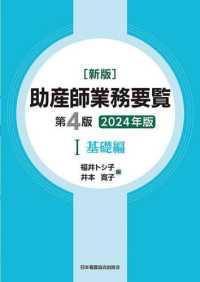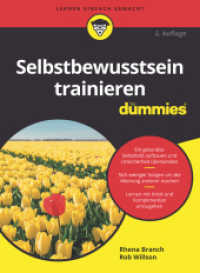Full Description
This innovative, comprehensive course textbook uses a clinical approach to explore pragmatics and pragmatic language skills.
Drawing on authentic, real-life examples of pragmatic breakdown in children and adults who have developmental or acquired language disorders, Louise Cummings expertly guides readers to core insights and principles for understanding where context and meaning in human communication meet. Key features include:
Chapter-opening learning objectives and chapter-closing summaries
Authentic illustrative cases of atypical pragmatic interaction
Exercises for checking knowledge and understanding
Annotated recommended further reading
A detailed glossary of important terms in pragmatics and clinical linguistics
Aimed equally at undergraduate and graduate students who are coming to pragmatics for the first time, the text discusses the key issues and concepts of this field in a fascinating new way. With a common, easy-to-follow structure across chapters and a wealth of pedagogical resources, this is an essential text for students of linguistics and applied linguistics, communication studies, speech-language pathology, psychology and cognitive science, and beyond.
Contents
Acknowledgements
Preface
Introduction
Chapter 1: Speech acts
1.1 Introduction
1.2 How to realise a speech act
1.3 A new approach to meaning
1.4 Happy and unhappy performatives
1.5 Explicit and implicit performatives
1.6 Saying and doing
1.7 Searle on speech acts
1.8 Indirect speech acts
Suggestions for further reading
Questions
Chapter 2: Implicatures
2.1 Introduction
2.2 Grice and the cooperative principle
2.3 The cooperative principle and implicatures
2.4 Types of implicature
2.5 Properties of implicatures
2.6 Relevance theory
Suggestions for further reading
Questions
Chapter 3: Presuppositions
3.1 Introduction
3.2 The economic rationale for presupposition
3.3 Presupposition triggers
3.4 Properties of presuppositions
3.5 Presuppositions in the real world
Suggestions for further reading
Questions
Chapter 4: Deixis
4.1 Introduction
4.2 Person and social deixis
4.3 Place deixis
4.4 Time deixis
4.5 Discourse deixis
4.6 Anaphora
Suggestions for further reading
Questions
Chapter 5: Figurative language
5.1 Introduction
5.2 Idioms
5.3 Metaphors
5.4 Irony
5.5 Hyperbole
5.6 Proverbs
Suggestions for further reading
Questions
Chapter 6: Politeness
6.1 Introduction
6.2 Brown and Levinson on politeness
6.3 Politeness and face in clinical settings
6.4 Criticisms of Brown and Levinson
Suggestions for further reading
Questions
Chapter 7: Topic management
7.1 Introduction
7.2 Topic management in clinical settings
7.2.1 Topic selection
7.2.2 Topic introduction
7.2.3 Topic development
7.2.4 Topic termination
7.3 Analysing topic management in conversation
7.4 Analysing topic management in narration
Suggestions for further reading
Questions
Chapter 8: Clinical pragmatics
8.1 Introduction
8.2 The communication cycle
8.3 Cognition and the communication cycle
8.4 Theory of mind
8.5 Executive function
Suggestions for further reading
Questions
Answers
Glossary
Bibliography
Index
Appendix








